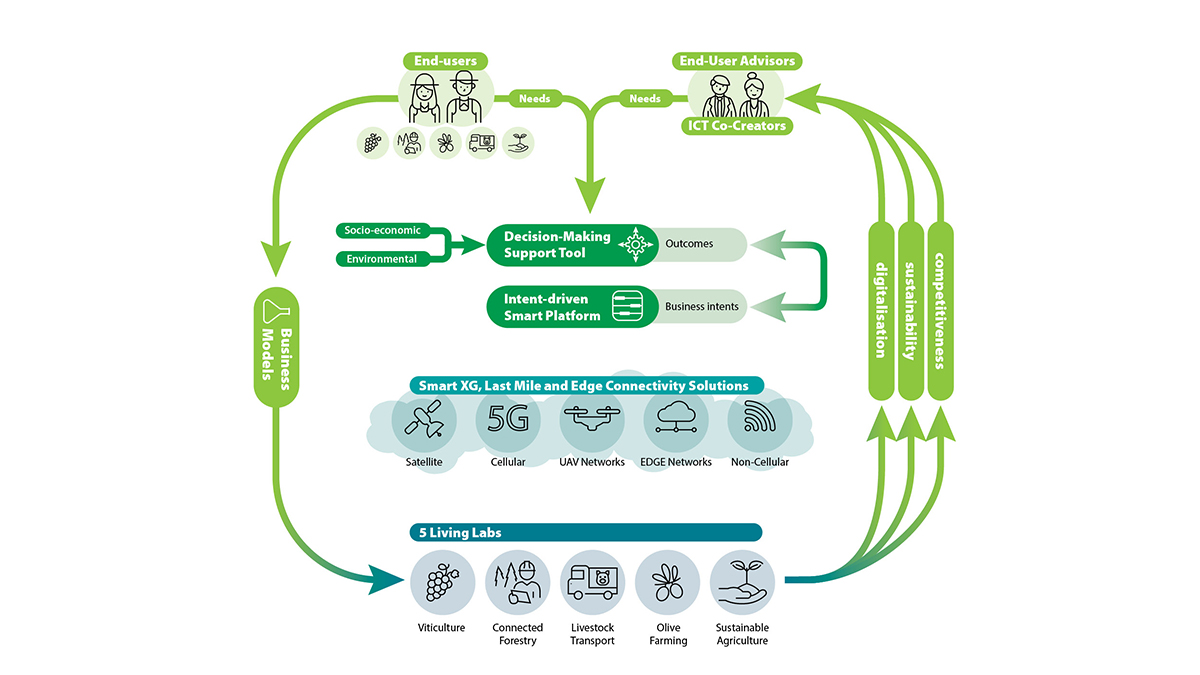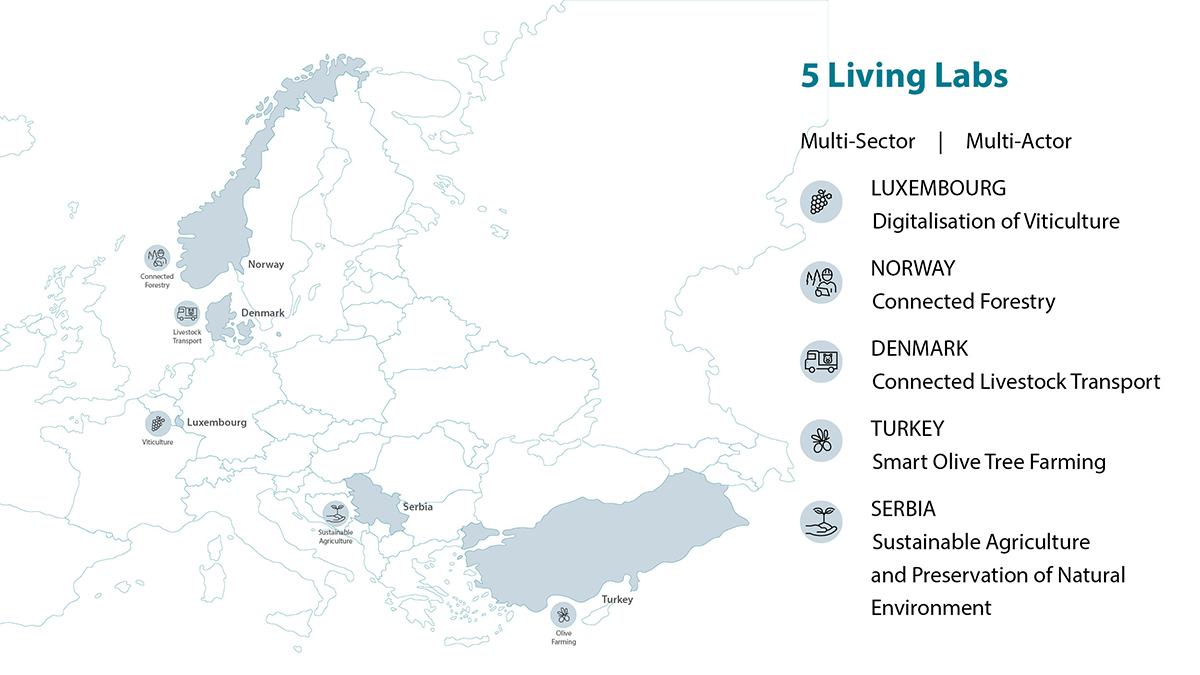
Rural and remote areas are still facing major challenges when it to comes to connectivity solutions. From the rough terrain and lower population density to the cost or difficulty of deployment, these types of locations remain largely unconnected to the internet. In a world in full ecological and digital transition, there is an urgent need to bring reliable high-speed broadband connectivity to guarantee digital access to rural communities and enable them to move towards sustainable, competitive agriculture. Connectivity is indeed a well-known prerequisite for the implementation of new digital technologies.
And this is precisely the objective of the newly launched project funded by the Horizon Europe programme and known as COMMECT: bringing “Community” and “Connectivity” together by providing quality, reliable and secure access in rural and remote areas to enable them to increase their competitiveness. To achieve such a goal, this innovative project will integrate Non-Terrestrial Networks with terrestrial cellular XG networks, and low-cost Internet of Things. With a view to actively contributing to global change mitigation, COMMECT also takes into account energy efficiency and environmentally friendly aspects. Artificial intelligence, edge and network automation will be used to reduce energy consumption, both in connectivity and in computing.

Figure 1: COMMECT Methodology
But the ambition of COMMECT does not end there. With a multi-disciplinary and complementary consortium of 20 partners, both from within and outside the European Union, this project coordinated by the Luxembourg Institute of Science and Technology (LIST) not only aims to provide rural communities with easy access to the internet, but also to raise people’s awareness of the various advantages of digital technologies and the value of data in a wide range of applications. In line with the view of the Horizon Europe Partnership “Agriculture Data”, the partners certainly aim to bring reliable evidence of the benefits of digital technologies, data sharing and possibly data monetarisation to support the competitive as well as sustainability needs of rural and remote areas.
In a complex context where there is often mistrust of unfamiliar concepts related to data, COMMECT wants to build a relationship of trust with these stakeholders. That is why it plans to work closely with its end users on development challenges by implementing five living labs that will be the basis for collecting a multitude of information. From weather and soil conditions to the status of crops, grapevines, olive trees or forests, a wide range of data will be collected throughout this unprecedented project.

Figure 2: COMMECT Living Labs
“Only by taking a holistic and multidisciplinary approach to the project’s objectives can we fully address the needs of rural communities and design a digital infrastructure that is tailored to their needs. Indeed, in each country, our end users face different challenges,” declared Dr Maria Rita Palattella, COMMECT Project Coordinator and researcher at LIST.
While in Luxembourg, the focus is on viticulture, as it is an important part of the country’s agricultural and economic sector, another scenario is being considered in Norway, where the emphasis is on connected forestry for instance. Similarly, the other three living labs will address distinct country-specific issues: connected livestock transport in Denmark, smart olive-tree farming in Turkey and sustainable agriculture as well as preservation of the natural environment in Serbia.
“Based on the huge amount of data that will be collected in the living labs and the performance analysis that will be carried out, we have the ambition to provide our stakeholders with a decision-making support tool, giving the best connectivity solution depending on technical, socio-economic and environmental considerations,” stated Dr Maria Rita Palattella. Indeed, such a tool would be a key enabler for jobs, business and investment in rural areas, as well as for improving the quality of life in areas such as healthcare, education and e-government, among others.
As input for this decision-making tool, several collaborative business models are expected to be designed to explain, depending on the solution adopted by a farmer, the income that could be expected and the potential increase in production. If certain technologies are used, a new strategy may be required whereby several farmers share devices and technology to minimise costs.
Launched in September 2022 and running for three years, COMMECT is in its early stages. “But we are already working hand-in-hand to identify the needs of several end users and stakeholders in the different target countries. In the first year of the project, we aim to understand what services could really empower farmers and what type of data they would need from their farm or fields, and use this information to propose the first connectivity solutions that could help them address their daily challenges,” concluded Maria Rita Palattella.
 Maria Rita Palattella is a Senior Researcher at LIST, in the Environmental Research and Innovation (ERIN) department. As an expert in Internet of Things, her current activities have focused on the application of IoT and other emerging technologies (5G, satellite, cloud, edge, etc.) in the agriculture sector to empower rural communities. On that front, she is coordinating the EU Horizon Europe COMMECT project, and leading other European and National research initiatives: HEMS Pilot Project of H2020 DEMETER, Lux5GCloud, and LORSAT.
Maria Rita Palattella is a Senior Researcher at LIST, in the Environmental Research and Innovation (ERIN) department. As an expert in Internet of Things, her current activities have focused on the application of IoT and other emerging technologies (5G, satellite, cloud, edge, etc.) in the agriculture sector to empower rural communities. On that front, she is coordinating the EU Horizon Europe COMMECT project, and leading other European and National research initiatives: HEMS Pilot Project of H2020 DEMETER, Lux5GCloud, and LORSAT.


